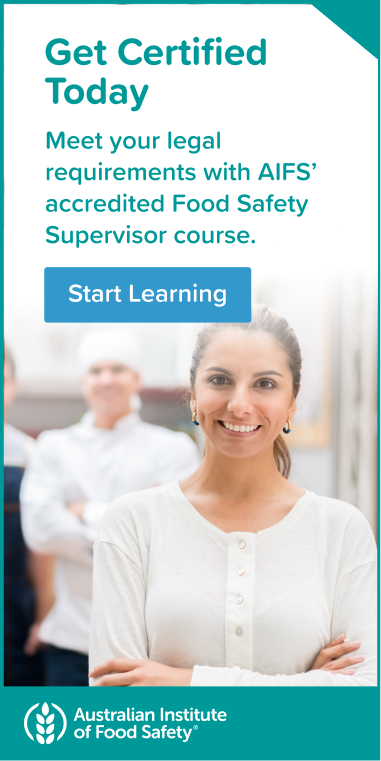
The government of Australia’s OzFoodNet network has launched their annual report on the incidence and cause of diseases potentially transmitted by food. The report also details outbreaks associated with food that happened during that time range.
A food-borne outbreak happens when two or more people experience the same illness after eating the same food or meal, and evidence finds the meal to be the source of illness.
Food-borne gastroenteritis costs the Australian economy an estimated $1.2 billion per year in lost productivity and medical expenses. Many of these illnesses can be prevented. Health departments conduct research on reported illnesses, to monitor trends, report outbreaks and come up with preventive measures.
Between the years 2013 and 2015, 12 diseases or conditions that can be transmitted by food were found to have increased:
- Botulism
- Cholera
- Hepatitis A
- Hepatitis E
- Haemolytic uraemic syndrome (HUS)
- Listeriosis
- Paratyphoid
- Salmonellosis
- Shigellosis
- Shiga toxin-producing Escherichia coli (STEC) infection
- Typhoid
The total notified cases of any of these diseases in 2013 in Australia was 28,676. By 2015, that number rose to 41,226.
The most commonly notified diseases were campylobacteriosis and salmonellosis — both of which are typically transferred through food, such as raw or undercooked chicken, or by improper hygiene practices, such as Food Handlers not washing their hands well after using the toilet.
Significance for food businesses
With 47 percent — nearly half — of all food-borne outbreaks covered in the report being connected to restaurants, these businesses were the most commonly reported food preparation settings causing these outbreaks. This shows room for improvement in restaurants specifically when it comes to avoiding these illnesses, which are mostly preventable through proper hygiene and food safety practices.
All restaurants should focus on the following:
Personal hygiene: All staff of any food business need to practise good personal hygiene, especially in regard to thorough hand washing. After using the toilet, sneezing, coughing, before and after handling different types of food, wash your hands with soap and warm water.
Cleaning: Ensure all food contact surfaces are cleaned and sanitised at regular intervals and between working with different foods. Some items need daily cleaning, (e.g. floors, dining tables and seats, restrooms, garbage bins), others require weekly cleaning (e.g. light fixtures, windows, doors) and some need monthly cleaning (e.g. walls, art displayed on walls). Use a checklist for staff to refer to. The importance of overall cleanliness cannot be overstated when it comes to preventing food poisoning.
Cross-contamination awareness: This is the process by which food becomes contaminated with harmful substances or agents. It’s easy for cross-contamination to happen, especially in commercial kitchens. When bacteria on food spreads to other foods, surfaces, hands or equipment, cross-contamination can occur, and can make customers sick. To prevent cross-contamination, use separate chopping boards for different types of foods and keep raw meat, poultry or shellfish well away from prepared or ready-to-eat foods — such as on a bottom shelf where juices can’t drip down and contaminate other foods.
Cooking: Cook food thoroughly, until it reaches the recommended minimum internal temperature. Raw or undercooked meat is an especially common cause of food-borne illness, so it’s crucial to cook meat well, and check with a thermometer to be sure. In order to safely destroy pathogens in meat, a general rule is that it must be cooked to 75°C for a minimum of two minutes.
Chilling: Make sure high-risk foods, such as poultry or beef, spend no more than two hours in the Temperature Danger Zone (5°C–60°C) and are thrown out after four hours. Store meat in the refrigerator at 5°C or below or in the freezer at -15°C or below. Never thaw foods at room temperature directly from frozen — always thaw in the refrigerator.
Checking: Always ensure food comes from reputable suppliers. Check the source, and never accept any questionable food into your food business. Keep an eye out for possible recalls on foods to make sure you don’t purchase any food that has been recalled. Check expiry dates, and use the “first in, first out” (FIFO) method — which means the food purchased first is used first.
The report shows that many food-borne illnesses increased across the country, and the highly common campylobacteriosis and salmonellosis are still present in high numbers, but following proper food safety procedures goes a long way in protecting Australians from contracting these diseases.
The Australian Institute of Food Safety (AIFS) is dedicated to reducing food-borne illness in Australia by giving food workers the skills to protect their customers. Our nationally recognised Food Safety Courses provide training in all aspects of food safety, including proper cleaning and sanitising procedures, time and temperature control and personal hygiene best practices.




